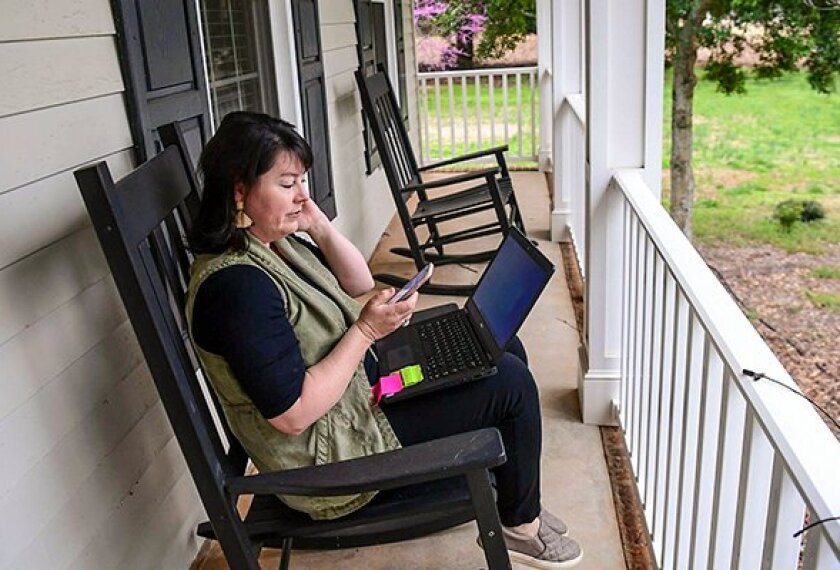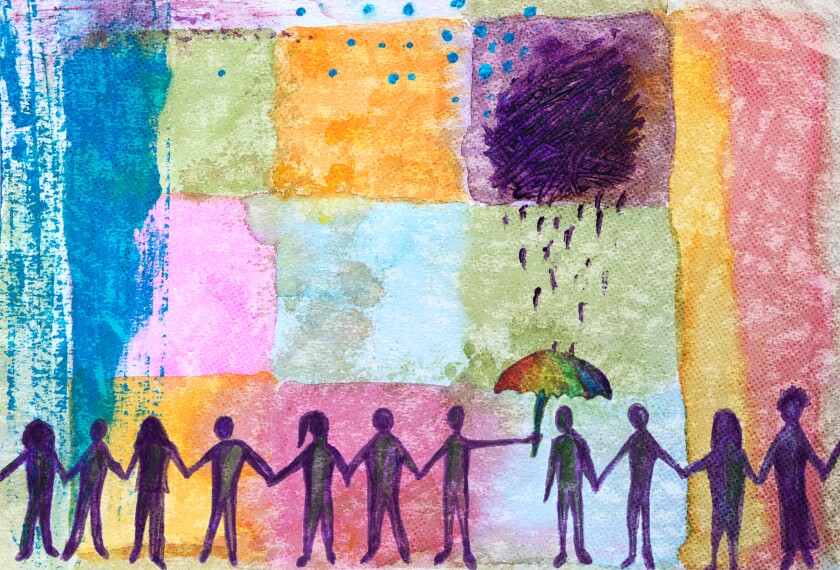Tens of millions of students are dealing with massive upheaval to their educations and daily lives with their schools shuttered indefinitely to thwart the spread of the coronavirus.
Add to that fears over a pandemic that could sicken them or loved ones, students now more than ever need strong coping skills to adjust to this new reality that will likely, for many, extend through the end of the school year and beyond.
But should social-emotional learning really be a focus for educators right now as they scramble to figure out how to teach their classes remotely?
And how can educators even continue to foster students’ social-emotional skills when they aren’t in class together?
To answer that first question, yes, said Marc Brackett, a professor at Yale University and the director of its Center for Emotional Intelligence.
Social-emotional learning is critical to managing anxiety at this time, he said.
“Because if you don’t know how to deal with the lack of control of your future, or the feelings of uncertainty that you’re having, your brain is going to stay in a constant fight or flight mode,” he said. “And if our brain is in fight or flight mode, then it’s not in learning mode.”
To answer that second question—about how to teach social-emotional skills remotely—EdWeek talked to experts to ask what SEL skills, exactly, schools should be encouraging and how teachers can do it.
Simple Things Teachers Can Do
One place to start, said Brackett, is to try a technique he calls psychological distancing.
Teachers can encourage students to stop thinking about themselves and instead ask: “‘Well, what would I do to support my best friend who was telling me they were really worried about the coronavirus? What would I say to them?’” Brackett said.
“And all of the sudden, they start thinking about all of these strategies that they would use to be compassionate to someone, but that they may not use for themselves.”
Students should examine what they are saying to themselves—consciously or not—inside their heads and to ask themselves, ‘is their self-talk helpful?’
“It’s about doing [something], as opposed to being in your head all the time about it,” Brackett said.
Many educators are already trying out different tactics to teach or infuse social-emotional learning into their remote lessons, said Karen VanAusdal, the senior director of practice at the Collaborative of Academic and Social Emotional Learning, or CASEL.
“It can be simple things, such as sending daily notes, or, as some educators are doing, morning meetings with their classes where they can build community and do check-ins with young people to see how it is going,” said VanAusdal. For younger students, some teachers have been reading books aloud to their students virtually and then reflecting on the social-emotional skills of the characters in the books, said VanAusdal.
For older students, VanAusdal recommends teachers ask students to examine the social-emotional attributes they’re seeing in leaders right now and to ask students how those qualities are helping the country through the crisis.
Some SEL skills educators should be highlighting in others and fostering in their students, said VanAusdal, are self-awareness, self-management, social awareness, and responsible decision-making.
Showing Kids They Can Reduce Risk
Examples for when those skills are necessary abound, said Catherine Bradshaw, a developmental psychologist and professor at the University of Virginia Curry School of Education and Human Development.
“Kids may have a lower risk of contagion so they have to be mindful that while they may not get sick, they have to wash hands to reduce other people’s risk,” said Bradshaw.
“So that’s a clear opportunity to understand how their actions and choices affect others.”
It’s also important to keep traditions and build supportive environments even when the class is scattered well beyond the classroom walls, said VanAusdal.
“Keeping up rituals, like a spirit week,” she said. “Have students wear crazy socks and take a picture of it and send it in.”
VanAusdal said she has seen several examples of principals and teachers making videos of supportive messages and sending them to their students.
Those are also ways to reach students who may be struggling to connect because they don’t have a computer or internet access at home, said VanAudal.
“I think we’re finding that students do have cellphone access, and there are ways they can still see video messages,” she said.
Some SEL curriculum providers are offering resources that are easy for students to use on their own and don’t require teacher or parent supervision, she said.
There are other exercises that students can do largely on their own.
Simple breathing exercises are beneficial.
Journaling is another. Teachers can provide students with prompts.
“It’s helpful for expressing emotions, but it’s also an interesting artifact to look back on when kids get older,” said Bradshaw.
But, while it’s important to talk to students about what’s going on in the world, it’s also important not to overwhelm students with too much information about the pandemic, said Bradshaw.
Teachers need to be sensitive to that, she said, and parents probably should not have cable news on in their house all day long.
And, she said, it’s important for educators to recognize that these are uncharted waters, and that there’s nothing that can really prepare people emotionally for dealing with a pandemic.
Kids—and adults—rely on social connections to get through difficult times. But the era of social distancing has upended all of that.
“So, we have a lot fewer tools in our tool kit to manage stress in these situations,” said Bradshaw.
“That’s why a lot of interpersonal skills are really going to be critical to helping kids manage this kind of stress.”






